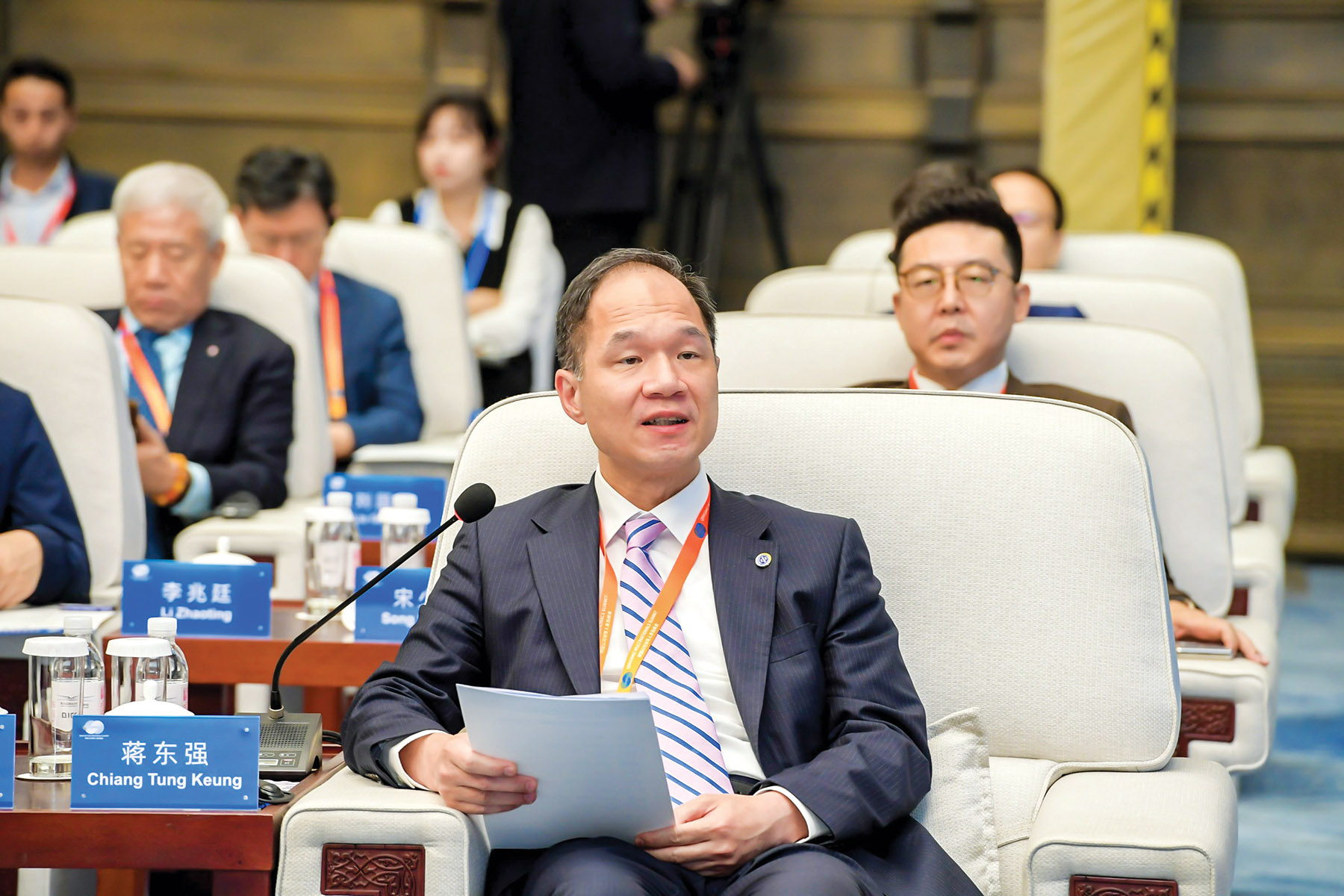
Hong Kong’s major power company has been making good progress with implementing its comprehensive plan to decarbonize the electricity system and support the city’s 2050 carbon neutrality goal, while ensuring its supply of power remains reliable and is reasonably priced.
“Decarbonization is our top priority,” CLP Holdings CEO T.K. Chiang told China Daily in a recent interview. He said long-term planning is key to the success of the energy transition and CLP
is continuing to adopt a multipronged strategy to make the power system less carbon-intensive, addressing the supply and demand of electricity.
The recent commissioning of CLP’s new 600-megawatt D2 gas-fired generation unit at Black Point Power Station has provided a further boost to Hong Kong’s decarbonization efforts, enabling the company to maintain a reliable power supply following the recent decommissioning of three of the four coal-fired generation units at Castle Peak A Power Station.
READ MORE: CLP Group CEO champions energy digitalization and decarbonization
Under the Hong Kong Special Administrative Region government’s Climate Action Plan 2050, decarbonizing the city’s electricity supply will be carried out in three phases. The first phase involves phasing out coal-fired power generation, while the second phase involves increasing regional cooperation to bring zero-carbon energy into the city. The third phase requires the city to use green hydrogen to achieve net-zero electricity generation before 2050.
In addition to its shift toward lower-carbon gas-fired power, CLP also continues to use nuclear and renewable energy to maintain a diversified fuel mix in Hong Kong as it gradually phases out its reliance on coal.
CLP has been importing nuclear power to Hong Kong since 1994, with the Daya Bay Nuclear Power Station in Guangdong province supplying a quarter of the city’s electricity needs and significantly contributing to Hong Kong’s economic and social development, according to Chiang.
CLP Holdings, which owns a 25 percent stake in Daya Bay, currently imports 80 percent of the electricity generated by the nuclear power station to Hong Kong annually, reducing the city’s carbon dioxide emissions by over 7.5 million metric tons a year. Over the past 30 years, Daya Bay has supplied Hong Kong with over 310 billion kilowatt-hours of electricity.
Chiang said CLP also encourages customers in Hong Kong to install their own solar and wind energy systems through the Feed-in Tariff Scheme. Since 2018, the program has added around 300 MW of renewable energy generation capacity to CLP’s grid in the city.
On the demand side, Chiang said commercial and business customers in Hong Kong have access to a wide range of energy services and solutions from CLP to reduce their electricity use and improve their energy efficiency. For example, CLP offers energy audit services to help customers identify opportunities to reduce their energy consumption.
Electrification is key to decarbonizing Hong Kong’s transport sector, and CLP is focused on developing the local electric vehicle ecosystem and promoting the wider adoption of both private and commercial EVs in Hong Kong to meet the city’s goal of zero vehicular emissions by 2050.
CLPe, the energy infrastructure and solutions subsidiary of CLP Holdings, launched its first two EV-charging stations in Hong Kong in the third quarter of this year, providing a selection of superfast chargers for commercial customers, including etaxi’s and corporate vehicle fleets, as well as medium-speed charging points.
CLPe also offers businesses and organizations in Hong Kong and other cities within the Greater Bay Area a diverse selection of energy-as-a-service solutions, including cooling and renewable energy.
Chiang said that, while CLP aims to supply more renewable energy to Hong Kong, the city’s geographical constraints mean that its potential to develop utility-scale wind and solar energy projects is limited. The SAR government’s Climate Action Plan 2050 envisages renewable energy contributing between 7.5 and 10 percent of the power generation fuel mix by 2035.
To ensure a reliable and reasonably priced supply of electricity during the energy transition, Chiang said increased regional cooperation is needed to bring in more zero-carbon energy to Hong Kong, following the successful model of Daya Bay Power Station.
Hydrogen produced by renewable energy has been identified as a potential source of zero-carbon energy for local electricity generation under the climate action plan. CLP is closely monitoring and assessing green hydrogen’s long-term potential to replace natural gas as the main fuel for power generation in Hong Kong.
Meanwhile, CLP has been discussing with major turbine suppliers the feasibility of repurposing the existing natural gas-fired power generation facilities in the long term to run on green hydrogen.
A pilot project that involves blending hydrogen into natural gas for power generation at Black Point Power Station is in progress. The pilot will help increase CLP’s understanding of the relevant technical, safety and legal requirements for using hydrogen for electricity generation.
As part of its Strategy of Hydrogen Development, the Hong Kong government is evaluating possible amendments to regulations to facilitate the use of hydrogen for energy purposes, and CLP is supportive of this direction.
However, Chiang noted that technologies related to green hydrogen are still under development, and it will take a long time to achieve the scale and cost required for power generation.
This article is sponsored by CLP Holdings


